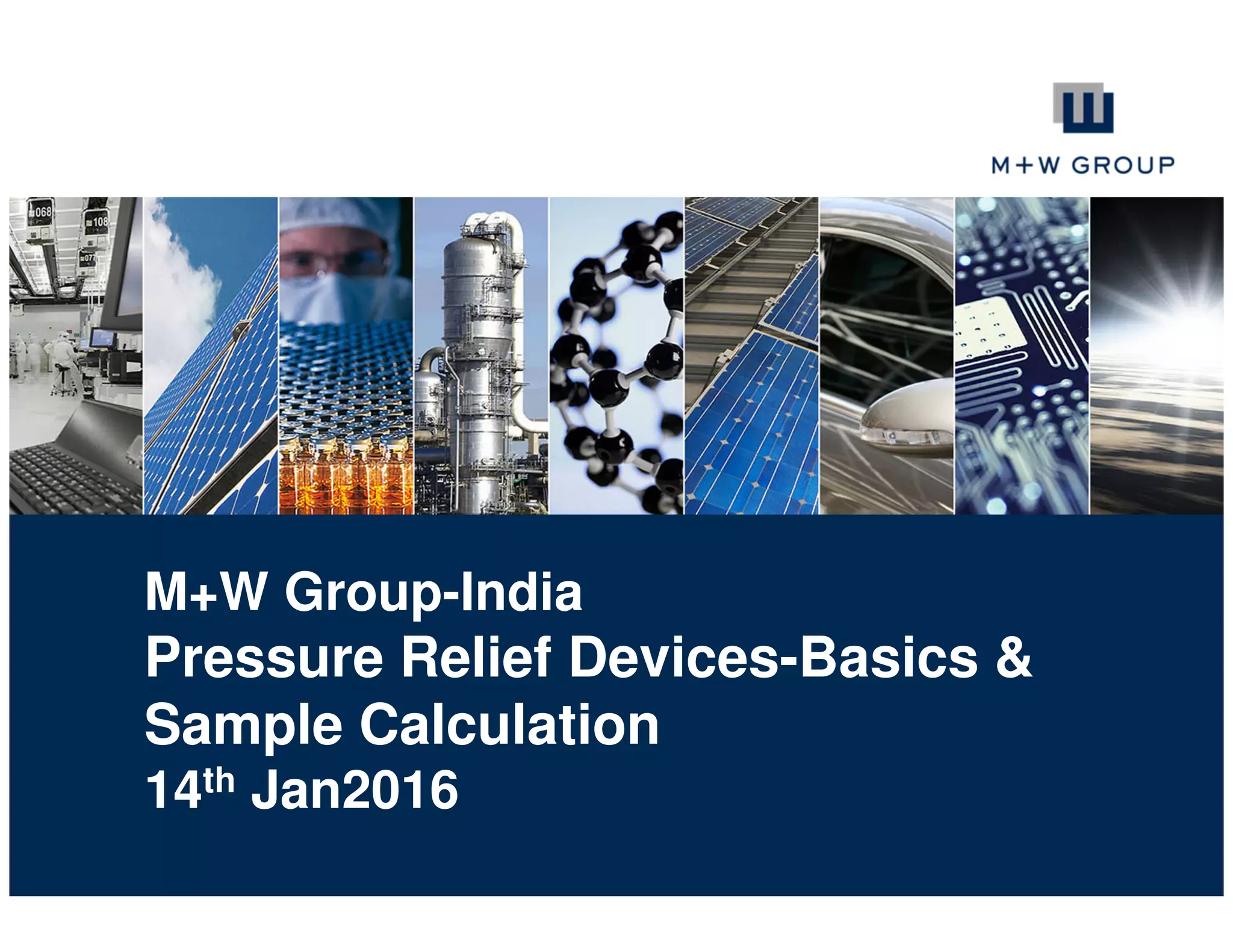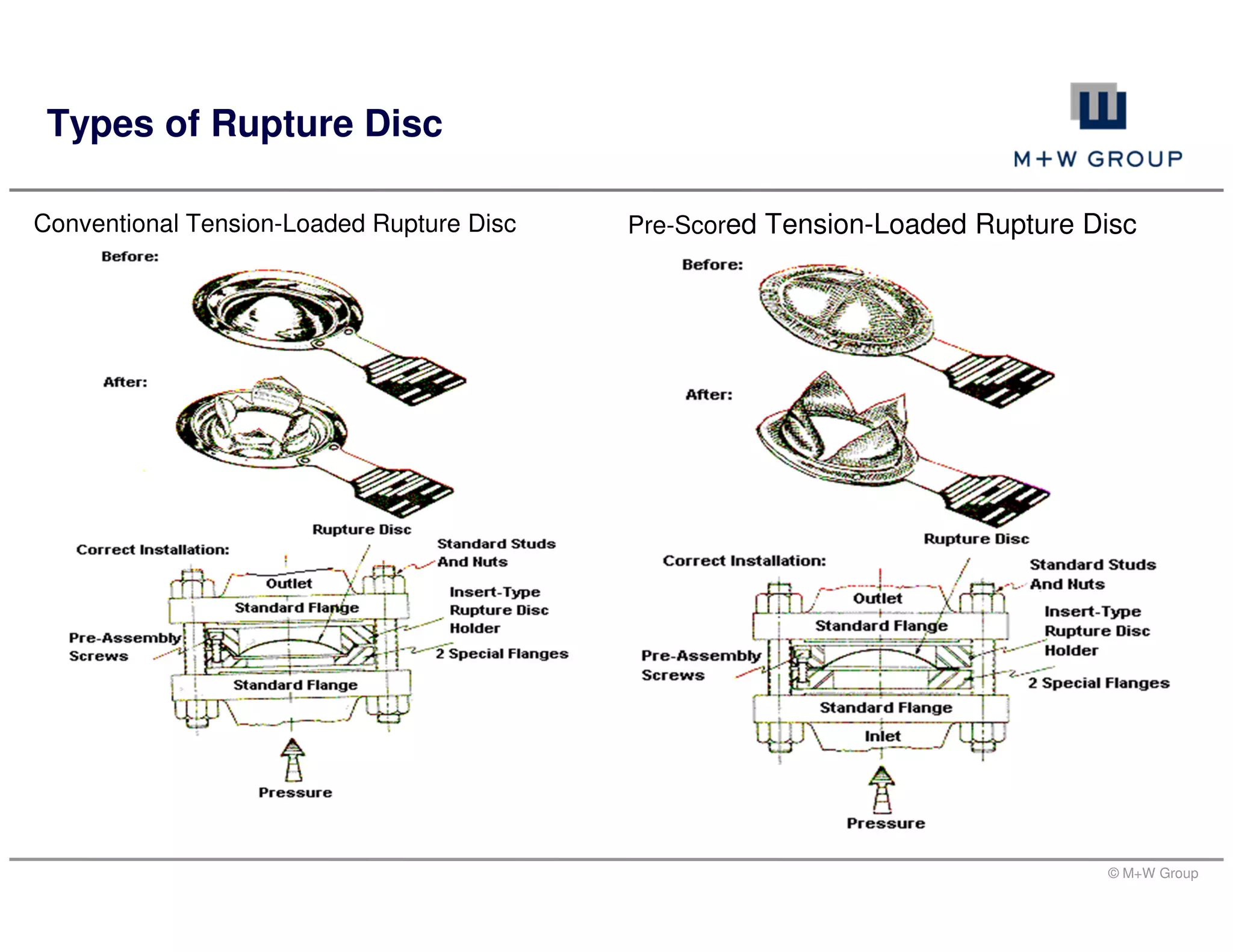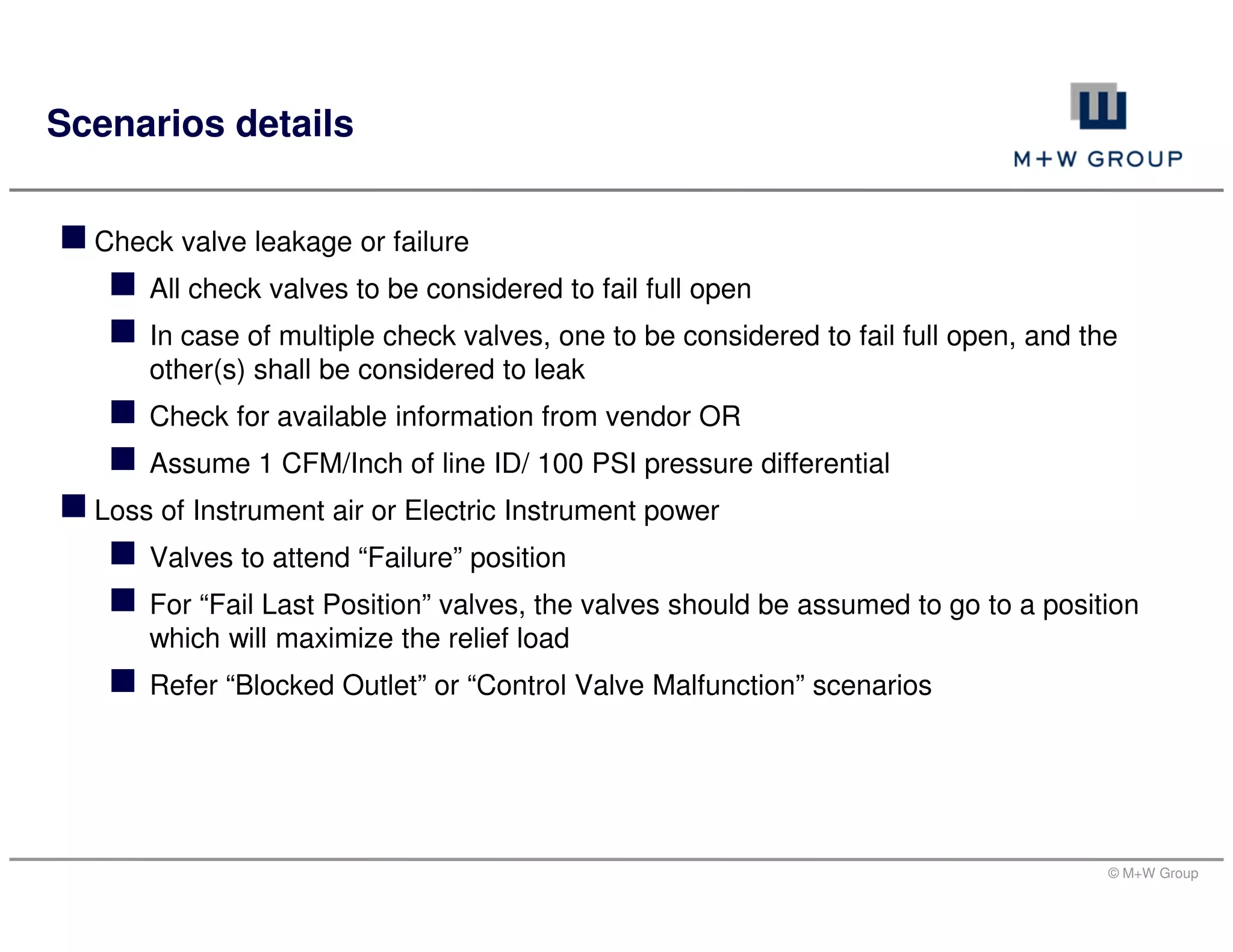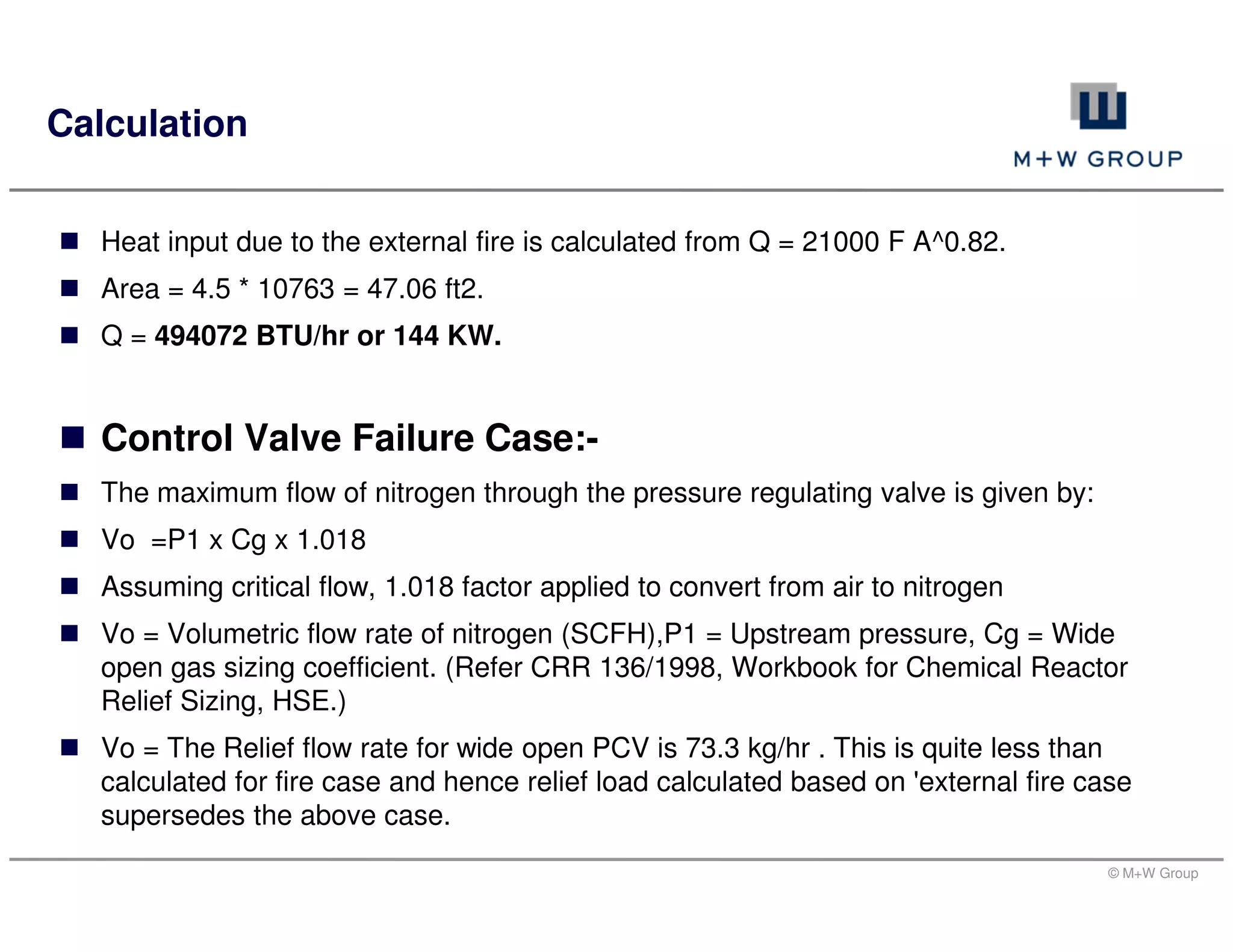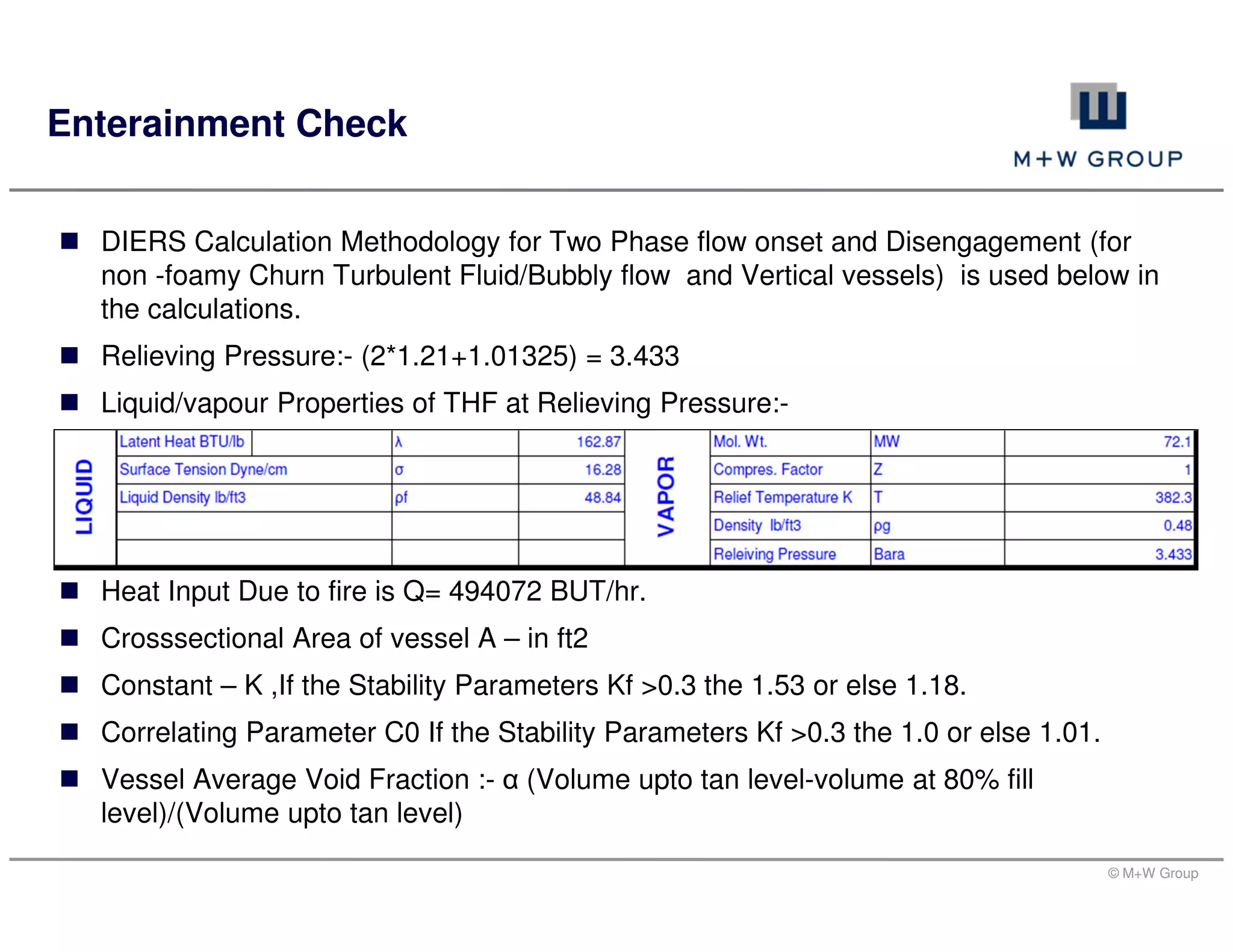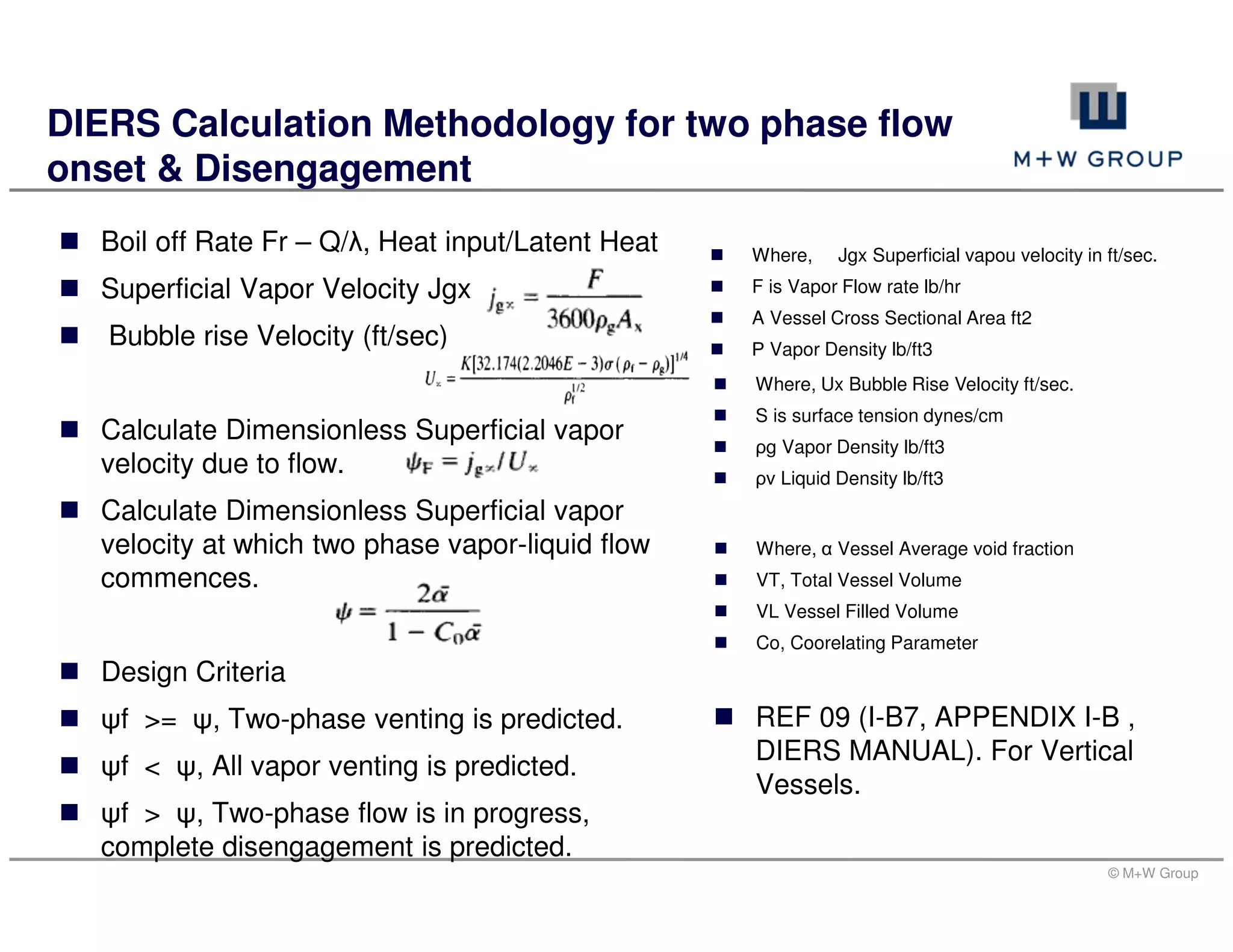The document summarizes the basics of pressure relief devices, including why they are required, common components, classification and types. It provides examples of relief scenarios and causes of overpressure. The key steps in relief device sizing calculations are outlined. An example calculation is shown for checking the adequacy of installed relief devices for a reactor system during an emergency relief scenario involving an external fire.
